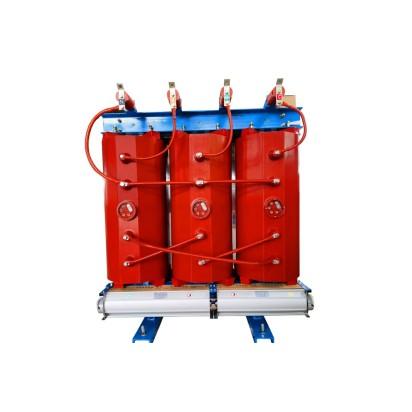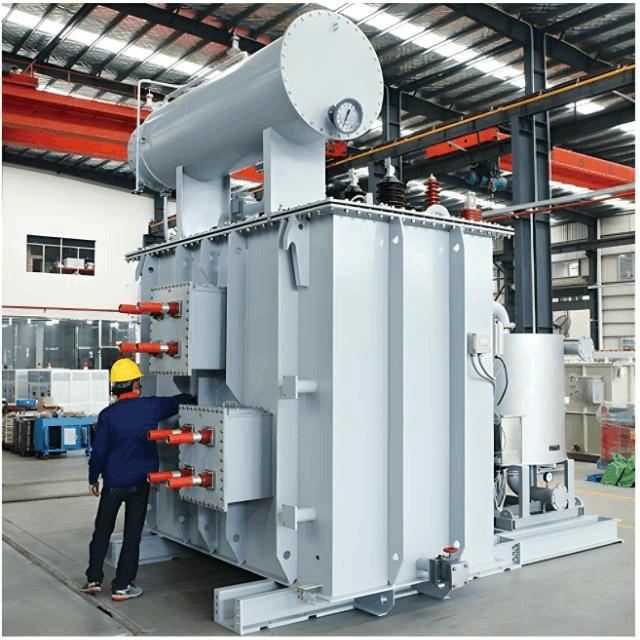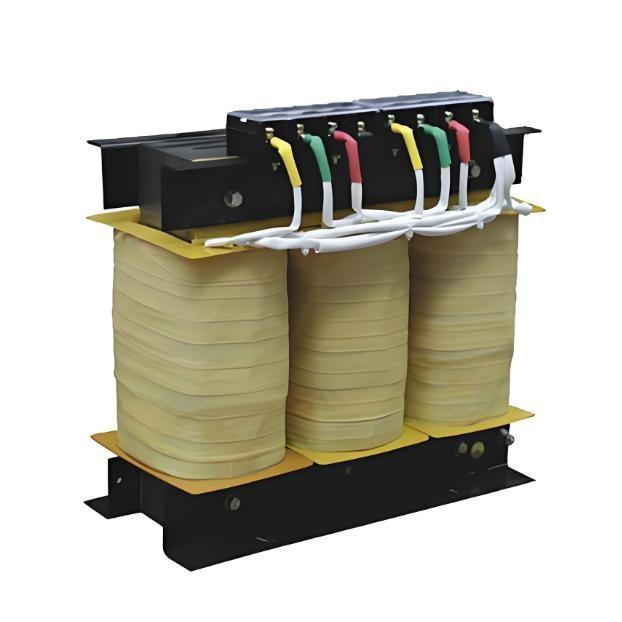This paper briefly outlines the advantages and technical characteristics of GIS (Gas-Insulated Switchgear) equipment, and elaborates on several critical quality control points and process control measures during on-site installation. It emphasizes that on-site withstand voltage tests can only partially reflect the overall quality and installation workmanship of GIS equipment. Only by strengthening comprehensive quality control throughout the entire installation process—especially in key areas such as installation environment, adsorbent handling, gas chamber treatment, and loop resistance testing—can the safe and smooth commissioning of GIS equipment be ensured.
With the development of power systems, higher requirements are being placed on the mechanical and electrical performance of primary substation equipment. As a result, more advanced electrical equipment is being increasingly applied in substations. Among them, Gas-Insulated Metal-Enclosed Switchgear (GIS) is gaining wider application due to its numerous advantages. Consequently, the on-site installation and commissioning of GIS has become a central aspect of substation construction.
1. Technical Characteristics of GIS Equipment
Compact structure with small footprint
High operational reliability and excellent safety performance
Eliminates adverse external influences
Short installation period
Easy maintenance and long inspection intervals
2. Key Process Control Points and Control Measures in GIS Installation
Due to the high integration and compact design of GIS equipment, any oversight during on-site installation may leave hidden risks that could lead to equipment failure or even grid accidents. Based on experience from multiple GIS substation installations, strict control over the following key aspects is essential during installation and commissioning.
2.1 Installation Environment Control
SF₆ gas is highly sensitive to moisture and impurities, so the on-site installation environment must be strictly controlled. Since gas chambers must be opened during installation, work should only be carried out in dry, clear weather with ambient humidity below 80%. Once a chamber is opened, vacuum processing should proceed continuously to minimize exposure time. For outdoor installations, wind speed should not exceed Beaufort scale 3. If necessary, local shielding measures should be implemented around the open chamber area, and dust generation within the safe zone must be strictly controlled. The installation area must remain clean and orderly.
Personnel must not wear loose-fiber clothing or gloves. Hair must be fully covered by a cap, and face masks should be worn. In high-temperature conditions, cooling measures should be taken to prevent sweat from introducing moisture into the chamber.
2.2 Handling of Adsorbent in GIS Gas Chambers
The adsorbent used in GIS is typically 4A molecular sieve, which is non-conductive, has low dielectric constant, and is free of dust. It exhibits strong adsorption capacity and can withstand high temperatures and arc exposure. The adsorbent should be dried in a vacuum drying oven at 200–300°C for 12 hours. Immediately after drying, it should be removed and installed into the chamber within 15 minutes. The chamber with installed adsorbent must begin vacuum processing promptly to minimize exposure to air.
Before installation, the adsorbent should be weighed and recorded for future reference during maintenance. If the weight increases by more than 25% during inspection, it indicates significant moisture absorption and requires regeneration. Adsorbent from arc-extinguishing chambers cannot be regenerated.
2.3 Vacuum Processing of Gas Chambers
Vacuum processing should commence immediately after chamber assembly. A check valve must be installed in the connecting pipeline, and a dedicated person must monitor the process to prevent backflow of pump oil into the chamber in case of power failure. The vacuum pump should be started first to verify proper operation before opening all pipeline valves. When stopping, valves should be closed before turning off the pump.
After achieving an internal absolute pressure below 133 Pa, the vacuum pump should continue running for an additional 30 minutes, then be stopped and isolated. The absolute pressure (PA) is recorded after 30 minutes of standstill. After a further 5-hour standstill, the pressure (PB) is read again. The chamber is considered well-sealed if PB – PA < 67 Pa. Only after passing this seal test can qualified SF₆ gas be charged into the chamber.
During vacuum processing, avoid prolonged conditions where one side of a盆式绝缘子 (disk-type insulator) is under rated operating pressure while the other side is under high vacuum, as this may cause mechanical damage. If necessary, reduce the pressure on the pressurized side to below 50% of the rated value.
2.4 Enclosure Grounding
Due to the dense internal layout of GIS, the electrical clearance between conductors and between conductors and the metal enclosure is very small. In the event of internal breakdown, large fault currents will flow through grounding conductors into the grounding grid. Additionally, because the GIS enclosure is made of closed-loop metallic material, asymmetric system faults can induce significant voltages on the enclosure due to magnetic induction, potentially damaging equipment or endangering personnel.
Therefore, grounding workmanship must meet high standards. Substations using GIS are recommended to use copper grounding grids to minimize total grounding resistance. All connections between the enclosure and the grounding grid must also use copper materials. Due to the presence of disk-type insulators and rubber seals between gas chambers, bonding copper bars must be installed between enclosures. The cross-sectional area of these bonding bars should match that of the main grounding grid.
GIS uses a multi-point grounding scheme. The number and location of grounding points should follow manufacturer and design specifications.
2.5 Main Circuit Resistance Testing
Main circuit resistance testing is crucial in GIS installation. It not only verifies the integrity of contact connections between modules but also confirms the correct phase sequence of the main busbar. For fully enclosed switchgear, correct phasing and reliable connections are especially critical. In practice, rework has occurred due to incorrect phasing or improper conductor connections.
Manufacturers typically provide standard contact resistance values for internal connections. Loop resistance should be tested segment by segment during assembly, allowing early detection and correction of poor contacts. The measured resistance for each section must not exceed the sum of the manufacturer’s specified values for all connections within that section.
After full assembly, a complete loop resistance test should be performed, and the result must not exceed the theoretical calculated value.
Special Note: Loop resistance testing must not be performed on chambers undergoing vacuum processing. Under sub-atmospheric pressure, the dielectric strength inside the chamber is extremely low. Even a few dozen volts can cause surface discharge on disk-type insulators, leaving discharge traces that become weak insulation points and potential fault sources during operation. Therefore, careful checks must be conducted before any resistance measurement to avoid testing on evacuated chambers.
2.6 Withstand Voltage Test
SF₆ gas’s excellent insulation properties enable GIS to achieve compact design. GIS uses grounded aluminum alloy enclosures, and under operating pressure, the gap between internal conductors or between conductors and the grounded enclosure is very small. Due to high factory pre-assembly, critical components are shipped pre-installed. However, component displacement during transport or introduction of tiny impurities during on-site installation can distort internal electric field distribution. Unlike porcelain-insulated equipment, even minor burrs or particles in GIS interrupters can cause abnormal discharge or breakdown.
Therefore, on-site withstand voltage testing serves as the final defense to verify GIS performance and installation quality.
According to acceptance test regulations, the on-site test voltage is 80% of the factory test voltage. For example, for a 110 kV GIS, the main circuit withstand test voltage is 80% of the factory test voltage: 230 kV × 80% = 184 kV, applied for 1 minute. The test should be conducted at least 24 hours after complete gas filling. Surge arresters and voltage transformers should not be included in the test. High-voltage outgoing cables should be tested together after being connected to the GIS. Before the test, insulation resistance should be measured and confirmed satisfactory.
Test Procedure: Increase voltage at a rate of 3 kV/s to the rated operating voltage (63.5 kV), hold for 1–3 minutes to observe equipment status, then raise to 184 kV and maintain for 1 minute. Repeat this procedure for each phase.
GIS that passes the withstand voltage test may be put into service. However, this test cannot detect all potential defects. In service, GIS must withstand not only power-frequency voltage but also lightning and switching overvoltages. The breakdown field strength of SF₆ gas varies with voltage type. For coaxial cylindrical electrode systems, the 50% breakdown voltage of SF₆ can be empirically expressed as:
U₅₀ = (AP + B)μd
Where:
P — Chamber pressure
d — Electrical clearance (mm)
μ — Electric field utilization factor
A, B — Constants dependent on voltage waveform
Thus, breakdown voltage varies with voltage type and polarity. Different internal defects exhibit different sensitivities to various voltage waveforms. Power-frequency AC voltage is sensitive to insulation breakdown caused by moisture, impurities, or metal particles in SF₆, but less sensitive to surface scratches or poor conductor surface conditions.
Therefore, power-frequency withstand tests cannot detect all internal defects. Enhancing process controls during installation and improving overall installation quality remain the most important measures to ensure safe GIS operation.
3. Conclusion
This paper analyzes key process and quality control points in the on-site installation and commissioning of GIS equipment. It demonstrates that on-site withstand voltage testing can only partially reflect the overall quality and workmanship of installed GIS. More importantly, it highlights that only through strict control of every installation process—ensuring full compliance with procedures and work instructions—can GIS equipment be safely and reliably commissioned from the outset.
It is hoped that this summary may serve as a useful reference for colleagues in the power construction industry.





















